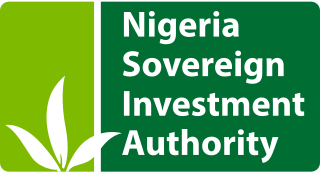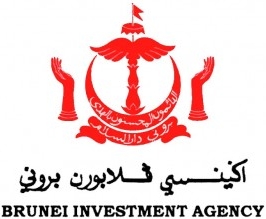
Temasek Holdings (Private) Limited, or simply Temasek, is a Singaporean state-owned conglomerate owned by the Government of Singapore. Incorporated on 25 June 1974, Temasek has a net portfolio of US$287 billion as of 2023, with S$27 billion divested and S$31 billion invested during the year. Headquartered at Orchard Road, Singapore, it has 13 offices in 9 countries around the world, including in Beijing, Brussels, Hanoi, London, Mexico City, Mumbai, New York City, Paris, San Francisco, Shanghai, Shenzhen and Washington D.C.
An institutional investor is an entity that pools money to purchase securities, real property, and other investment assets or originate loans. Institutional investors include commercial banks, central banks, credit unions, government-linked companies, insurers, pension funds, sovereign wealth funds, charities, hedge funds, real estate investment trusts, investment advisors, endowments, and mutual funds. Operating companies which invest excess capital in these types of assets may also be included in the term. Activist institutional investors may also influence corporate governance by exercising voting rights in their investments. In 2019, the world's top 500 asset managers collectively managed $104.4 trillion in Assets under Management (AuM).

The Abu Dhabi Investment Authority is a sovereign wealth fund owned by the Emirate of Abu Dhabi in the United Arab Emirates, founded to invest funds on behalf of the Government of Abu Dhabi. It manages the emirate's excess oil reserves and is estimated to manage $853 billion. ADIA is one of the largest sovereign wealth funds in the world.

Khazanah Nasional Berhad (lit. 'National Treasure Limited'; doing business as Khazanah Nasional or simply Khazanah) is the sovereign wealth fund of the Government of Malaysia. One of the largest sovereign wealth funds in the world, it was established to invest surplus revenues for Malaysia. Through its investments and activities, the fund seeks to deliver sustainable economic and societal benefit for the nation. This includes achieving long-term risk-adjusted returns across the portfolio, as well as undertaking investments that catalyse new growth areas, strengthen Malaysia’s economic competitiveness, and contribute to priority socioeconomic outcomes.

The State Administration of Foreign Exchange (SAFE) of the People's Republic of China is an administrative agency under the State Council tasked with drafting rules and regulations governing foreign exchange market activities, and managing the state foreign-exchange reserves, which at the end of December 2016 stood at $3.01 trillion for the People's Bank of China. The current director is Zhu Hexin.
The Future Fund is an independently managed sovereign wealth fund established in 2006 to strengthen the Australian Government's long-term financial position by making provision for unfunded superannuation liabilities for politicians and other public servants that will become payable during a period when an ageing population is likely to place significant pressure on the Commonwealth's finances. As of December 31 2023, the fund has $272.3 billion in assets under management.

A sovereign wealth fund (SWF), sovereign investment fund, or social wealth fund is a state-owned investment fund that invests in real and financial assets such as stocks, bonds, real estate, precious metals, or in alternative investments such as private equity fund or hedge funds. Sovereign wealth funds invest globally. Most SWFs are funded by revenues from commodity exports or from foreign-exchange reserves held by the central bank.

An alternative investment, also known as an alternative asset or alternative investment fund (AIF), is an investment in any asset class excluding capital stocks, bonds, and cash. The term is a relatively loose one and includes tangible assets such as precious metals, collectibles and some financial assets such as real estate, commodities, private equity, distressed securities, hedge funds, exchange funds, carbon credits, venture capital, film production, financial derivatives, cryptocurrencies, non-fungible tokens, and Tax Receivable Agreements. Investments in real estate, forestry and shipping are also often termed "alternative" despite the ancient use of such real assets to enhance and preserve wealth. Alternative investments are to be contrasted with traditional investments.
The Canada Pension Plan Investment Board, operating as CPP Investments, is a Canadian Crown corporation established by way of the 1997 Canada Pension Plan Investment Board Act to oversee and invest the funds contributed to and held by the Canada Pension Plan (CPP).
Global assets under management consists of assets held by asset management firms, pension funds, sovereign wealth funds, hedge funds, and private equity funds.
Partners Group Holding AG is a Swiss-based global private equity firm with US$147 billion in assets under management in private equity, private infrastructure, private real estate and private debt.

UBS Group AG is a multinational investment bank and financial services company founded and based in Switzerland. Headquartered in Zürich, it maintains a presence in all major financial centres as the largest Swiss banking institution and the largest private bank in the world. UBS client services are known for their strict bank–client confidentiality and culture of banking secrecy. Because of the bank's large positions in the Americas, EMEA and Asia Pacific markets, the Financial Stability Board considers it a global systemically important bank.
The Santiago Principles or formally the Sovereign Wealth Funds: Generally Accepted Principles and Practices (GAPP) are designed as a common global set of 24 voluntary guidelines that assign best practices for the operations of Sovereign Wealth Funds (SWFs). They are a consequence of the concern of investors and regulators to establish management principles addressing the inadequate transparency, independence, and governance in the industry. They are guidelines to be followed by sovereign wealth fund management to maintain a stable global financial system, proper controls around risk, regulation and a sound governance structure.
The Oman Investment Fund is a sovereign wealth fund, established in 2006 in accordance with a royal decree of His Majesty the Sultan of Oman. The fund makes medium to long-term investments, globally and domestically, to diversify the government of Oman's asset base and create a pool of sustainable cash flow. Currently, the fund's assets under management are estimated at approximately US$18 billion.

Government Pension Investment Fund, or GPIF, is an incorporated administrative agency, established by the Japanese government. It is the largest pool of retirement savings in the world. Japan's GPIF is the largest public fund investor in Japan by assets and is a major proponent of the Stewardship Principles.

The Nigeria Sovereign Investment Authority is a Nigerian establishment which manages the Nigeria sovereign wealth fund, into which the surplus income produced from Nigeria's excess oil reserves is deposited. This sovereign wealth fund was founded for the purpose of managing and investing these funds on behalf of the government of Nigeria. The fund was established by the Nigeria Sovereign Investment Authority Act 2011, signed in May 2011, and commenced operations in October 2012. It is intended to invest the savings gained on the difference between the budgeted and actual market prices for oil to earn returns that would benefit future generations of Nigerians. The fund was allocated an initial US$1 billion in seed capital, and, an additional $0.60billion has been contributed to date by the current administration. In October 2023, the fund has US$2.3 billion in assets under management.

The Brunei Investment Agency (BIA) is a government-owned corporation that reports to the Ministry of Finance of the Government of Brunei. Established in 1983, its offices are located in Bandar Seri Begawan at the Ministry of Finance HQ. Data on the agency's assets are not reported to the public and the Sultan and his assets, to a certain degree, are also incorporated in the agency; however the extent is unknown. In October 2023, the fund has a total of US$73 billion in assets under management.

CDH Investments is a major Chinese alternative asset management firm based in Beijing, China. It specializes in private equity, venture capital and credit products. CDH invests across a range of sectors and regions. As of March 2015, CDH manages over RMB 100 billion of investor capital across its various investment platforms.
The Exchange Fund of Hong Kong is the primary investment arm and de facto sovereign wealth fund of the Hong Kong Monetary Authority. First established in 1935 in order to provide backing to the issuance of Hong Kong dollar banknotes, over the years the role of the Fund has continually expanded to now include management of fiscal reserves, foreign currency reserves, real estate investments, and private equity.












